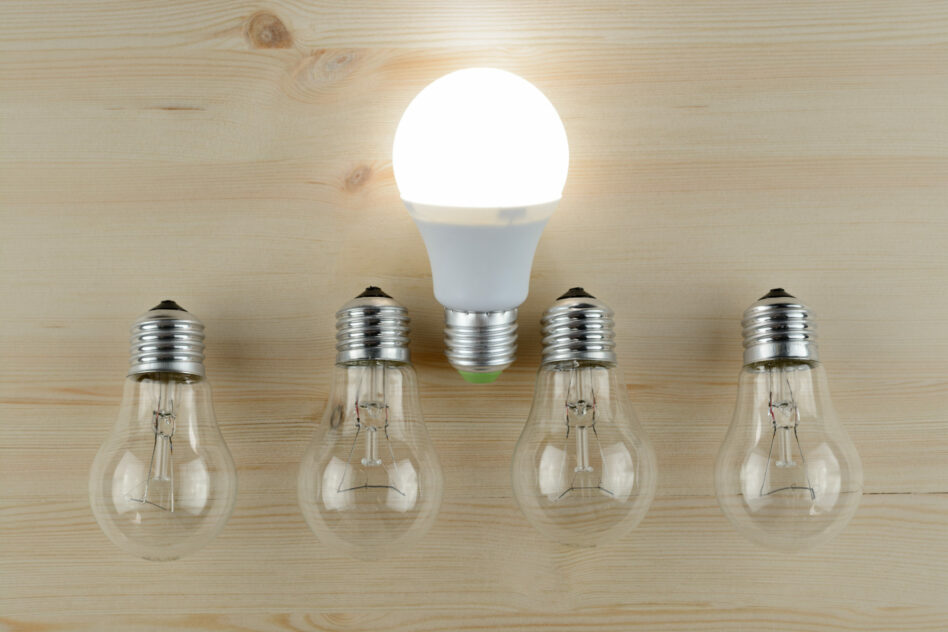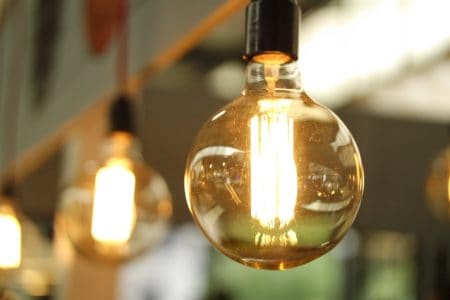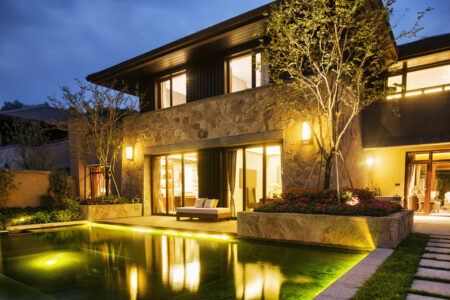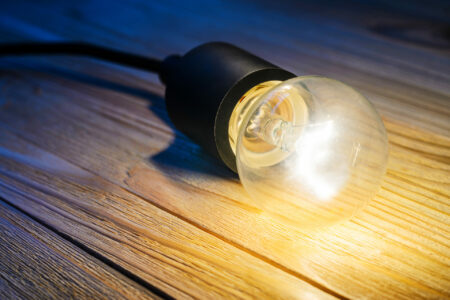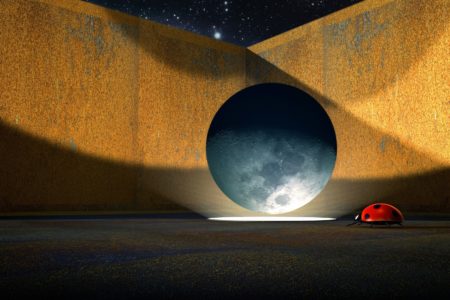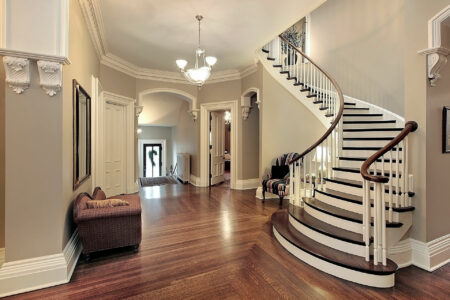LED lamps are popular because of their ability to produce optimal lighting using much less energy than incandescent bulbs. You just need to pick the right wattage bulb. But what is the equivalent wattage for LED bulbs? Keep reading to find out.
What Is the Equivalent Wattage for LED Bulbs?
More and more people around the country are switching to LED lighting every day. However, sometimes picking an LED bulb can be confusing, especially when it comes to equivalent wattage.
LED bulbs come in all shapes and sizes. Before LEDs, we used to choose a light bulb by wattage, but those days are now over. If you know what you’re looking for, the process of picking a bulb becomes much easier.
What Is Wattage?
Watts measure the amount of energy a bulb consumes. For example, a 100W bulb needs 100 watts to operate. Consequently, the more watts used, the higher your energy bill is.
With the use of incandescent 60W bulbs for many years, we’ve associated watts with brightness. After developing LED technology, we can’t do that anymore. That’s because LED bulbs need less energy to produce the same level of brightness we’re used to.
What Are Lumens?
Now with LED bulbs around, we need to focus more on the lumens rather than wattage. Lumens measure the level of brightness produced by a light bulb. Obviously, the higher the lumens, the brighter a bulb illuminates.
Recently, manufacturers started to declare the lumens of each bulb on its package to clear the confusion.
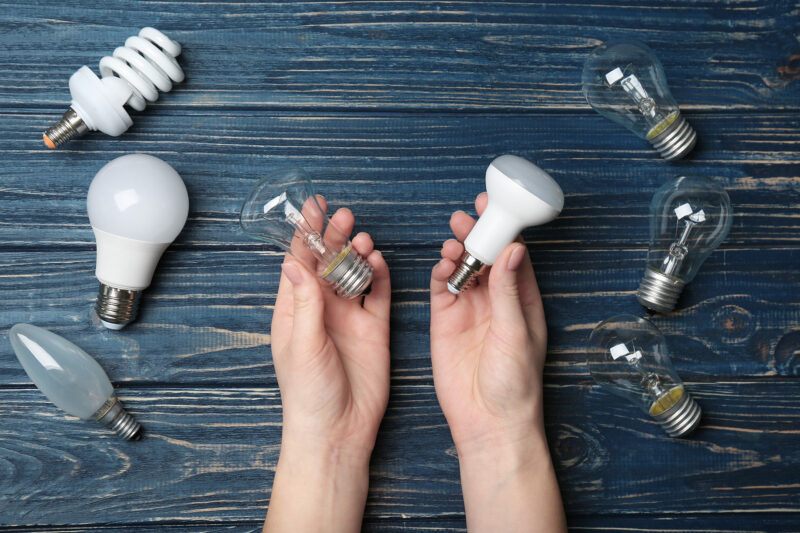
Lumens/Wattage Relation
The relation between a bulb’s wattage and the lumens it produces can help us measure its luminous efficiency. This term refers to the lumens created per each watt consumed.
In other words, luminous efficiency indicates how economical the bulb is in converting watts into lumens. For example, a 60W incandescent bulb produces 800 lumens. This means that it has an efficacy of about 13 lumens/watt.
LED bulbs, on the other hand, are so efficient that they produce between 75 to 100 lumens/watt. That’s almost seven times more efficient than incandescent, and this is why LED technology is considered revolutionary.
That said, people can use this 7:1 ratio to roughly estimate the LED bulb you should get.
What Is Equivalent Wattage?
Equivalent wattage is a term used to describe the brightness of an LED bulb in comparison with incandescent lamps.
For example, when you see the phrase “60W equivalent” on an LED light bulb, it doesn’t mean it consumes 60W. Instead, it means the bulb produces as many lumens as a 60W incandescent, which is 800 lumens.
Having said that, a 60W equivalent LED bulb uses as little as 8W to illuminate. You can use the 7:1 ratio started above to verify that. So, when converting from incandescent to LED bulbs, a 60W incandescent equals a 60/7W LED.
Take a look at the following table to know each LED bulb’s equivalent wattage and how much lumens it means.
| Lumens | Equivalent Incandescent Wattage | Actual LED Wattage |
|---|---|---|
| 250 | 25W | 2–3W |
| 560 | 40W | 3–6W |
| 800 | 60W | 7–10W |
| 1100 | 75W | 10–15W |
| 1600 | 100W | 15–20W |
| 2600 | 150W | 20–30W |
How About Other Lighting Options?
Replacing incandescent with LED bulbs isn’t the default. In other situations, you may need to replace a halogen bulb or even a CFL one. After all, an LED light source is the most energy-efficient of all.
So, are all types of bulbs the same when it comes to LED equivalent wattage? The answer is: No, they’re not. Different types of bulbs consume different energy levels.
Check out a couple of types of lamps and their LED Wattage equivalent.
1. Compact Fluorescent Lamps (CFL)
CFL bulbs make great replacements for incandescent lighting because of their longer life span. However, they’re not as good as LEDs. A typical LED bulb offers almost 40% more efficiency than a CFL lamp with double the life span.
2. Halogen Lamps
These types of lamps are basically the same as incandescent but with a bit more enhanced efficiency. Despite that, halogen bulbs still aren’t remotely as energy-saving as LED bulbs.
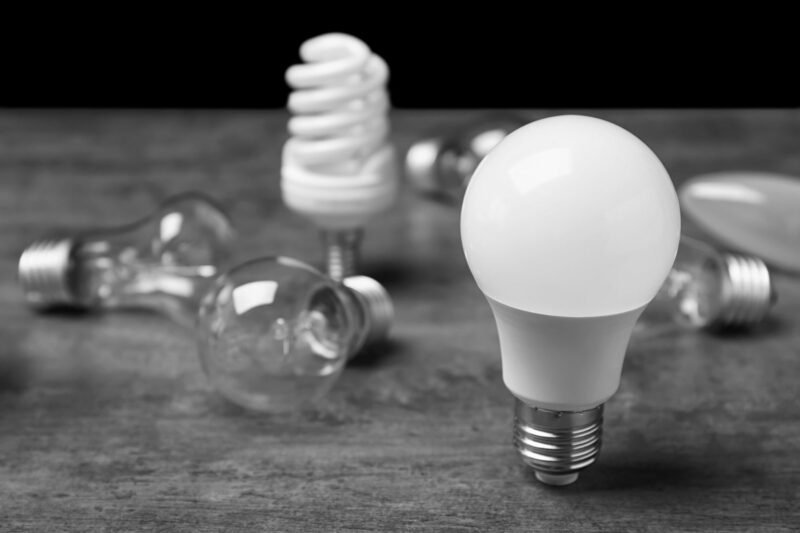
Comparison Table
Examine the following table showing halogen bulb wattages as well as CFL wattage and their LED equivalents.
| Lumens | Equivalent CFL Wattage | Equivalent Halogen Wattage | Actual LED Wattage |
|---|---|---|---|
| 250 | 6W | 19W | 2–3W |
| 560 | 10W | 33W | 3–6W |
| 800 | 13W | 43W | 7–10W |
| 1100 | 18W | 53W | 10–15W |
| 1600 | 23W | 72W | 15–20W |
| 2600 | 42W | 130W | 20–30W |
Can I Use Higher Wattage Equivalent LED Bulbs With Lower Wattage Fixtures?
Some people wonder whether installing a 100W equivalent LED bulb to a 60W socket is ok, as they need brighter lighting. Well, it certainly is.
As long as the light bulb itself consumes less wattage than stated on the fixture, you can safely use it. According to the table above, a 100W equivalent LED bulb needs 15–20W to operate. So, it should work fine when installed to light fixtures of a lower wattage than 100W.
For example, if a specific light fixture or socket states: “don’t exceed 60W,” you can use a 150W equivalent LED bulb with it. That’s because the actual wattage consumption of this bulb is 20–30W.
What Does the Wattage Rating on Light Fixtures Mean?
The wattage rating you see on fixtures, like shade lamps, chandeliers, and ceiling fans is there for safety measures. This rating is mainly there for incandescent bulbs.
You see, incandescent lamps generate an enormous amount of heat, which can damage the lighting fixture. LEDs, on the other hand, convert most of the energy they get to light rather than heat (that’s the primary reason for their excellent efficiency).
What To Consider When Choosing an LED Bulb?
You can safely use 100W, 125W, and 150W equivalent LED bulbs in a 60W electricity socket. After all, they all consume less than 50W in reality. However, pay attention to the size of the bulb itself.
These types of LED bulbs usually come in a slightly larger size than average, which is A21. On the other hand, almost all ordinary incandescent bulbs come in A19 size.
So, before choosing the LED bulb that fits your brightness needs, make sure that your lighting fixture can accommodate a larger-sized bulb.
